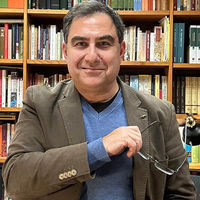Early Modern Europe
Stanford’s graduate program in Early Modern European History offers comprehensive training in the methods and tools of historical analysis, providing a strong foundation for advanced careers in teaching, research, and public humanities. Our primary focus is western Europe, Britain, and the Mediterranean, as well as the history of early modern science and medicine, with opportunities to connect these fields to allied subjects, including the history of the Ottoman empire, Russia and Eastern Europe, East Asia, colonial Latin America, North America, and the Caribbean. We encourage students who wish to explore cross-cultural and global aspects of early modern history to work across fields and consider doing the department's World History teaching certificate, or potentially apply through the Transnational, International, and Global History (TIG) field.
We have a distinguished tradition of early modern history at Stanford with a very strong record of fellowships and placements. Our graduates can be found in many different institutions, public and private, and we encourage students to explore a wide variety of career opportunities with the PhD and work with each of them to create an individualized program to suit their specific interests and goals.
Beyond the History Department, graduate students find a vibrant and exciting focal point for medieval and early modern studies in Stanford’s Center for Medieval and Early Modern Studies (CMEMS), which brings together faculty and graduate students from a wide range of disciplines, including Art & Art History, Classics, Comparative Literature, Economics, English, German Studies, French & Italian, Iberian and Latin American Studies, Music, Religious Studies, and beyond. CMEMS hosts weekly lunchtime seminars at which visiting faculty and advanced graduate students present their work, as well as public lectures, and symposia. Students interested in science, technology, and medicine can similarly take advantage of seminars, workshops, and funding opportunities through the Suppes Center for the History and Philosophy of Science and Technology.
Stanford University Libraries house a considerable collection of early modern books, manuscripts, and digital archives. Students interested in curatorial work are encouraged to work with curators, artifacts, and exhibitions in Special Collections and the Cantor Arts Center. We also encourage students to explore the transformative potential of the Digital Humanities through the Center for Spatial and Textual Analysis (CESTA).





